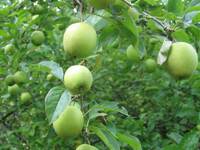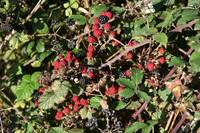- England
- Scotland
- France
- Holland
- Germany
- Italy
- Spain
- Portugal
- USA
- China
- Japan
- India
- Iran
- Advice
- Gardens
- England
- Scotland
- France
- Holland
- Germany
- Italy
- Spain
- Portugal
- USA
- China
- Japan
- India
- Iran
- Advice
- Garden Tours
Book: Landscape Planning and Environmental Impact Design: from EIA to EID
Chapter: Chapter 7 Agriculture, farming and countryside policy
Increasing the production of unfarmed food should become an objectives in countryside planning. Country planners have paid insufficient attention to food variety and food quality. They have tended to see country planning as a quest for land use diversification: largely to include recreation and nature conservation on the list of planning objectives. Yet the capacity of rural areas to produce food also needs to be diversified. Fabos remembers how diversification saved his family during the second world war (Fabos, 1985). Here are three arguments in favour of developing wild food production: First, it is desirable to have a strategic reserve of food which is independent of organised agriculture. Europe re-discovered the value of such a reserve three times in the twentieth century: during the First and Second World Wars and during the break up of the communist dictatorships in the 1990s. These events are a warning that rich states cannot assume they are safe from famine. Even in peacetime, there are many people who obtain insufficient income from social security and charity who would benefit from a supply of wild food. Second, wild food has great nutritional value. This point has been made forcefully by Michael Crawford in The Driving Force (Crawford & Marsh, 1989:150). He argues that the amazing development of the human brain was coincident with man's ascent to the top of the food chain. Obtaining a wide range of complicated vitamins and proteins made it possible for body and brain to become highly sophisticated. Modern industrial farming is hindering the process by using a more limited range of inputs. Rackham comments that Alpine farmers used to regard hay containing less than a dozen plant species as 'unfit for bovine consumption' (Rackham, 1990:340). Diets need to be supplemented with wild foods. Third, there is great pleasure to be had from collecting what Richard Mabey described as 'food for free' [Fig 7.15]. He gives the reasons for seeking it out as 'interest, experience, and even, on a small scale, adventure (Mabey, 1972:4). It satisfies the 'gatherer' strain in man's evolutionary history, just as hunting, physical danger and competitive sports satisfy the 'hunter' strain. The range of wild foods is great. Personally, I collect wild strawberries, raspberries, blackberries, mushrooms, nuts and herbs. Supplies of wild food can be greatly enhanced by public action: - the purchase and planting of small areas of land - planting and management grants for privately owned land - planting on land already in public ownership (road verges, river banks, public parks) - research into new management techniques (eg for encouraging the growth of wild fungi) Autumn may become the most popular season of the year for visiting the countryside, once stocks of wild food have been restored. In addition to its nutritional merits, wild food carries more social prestige than agricultural crops.

